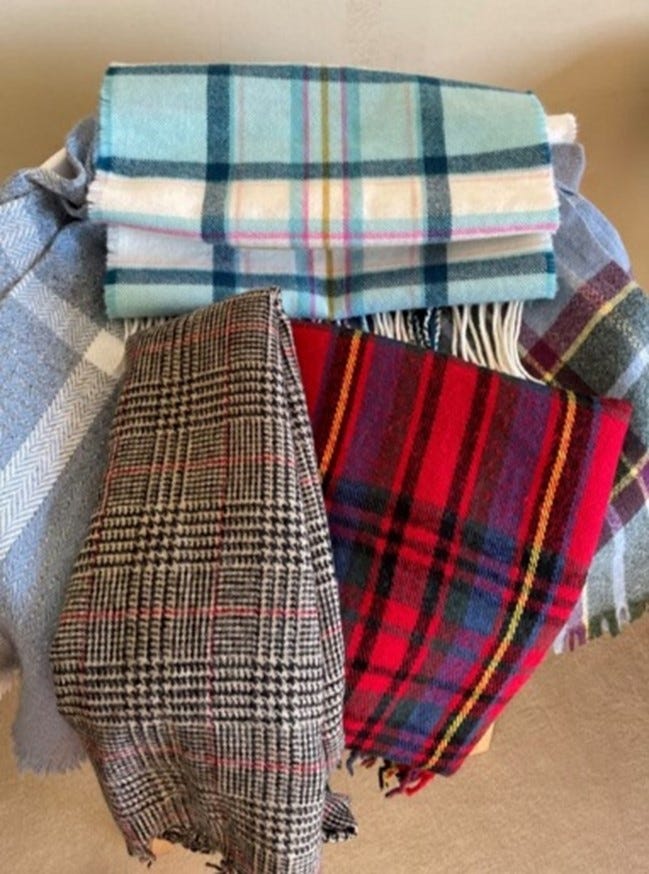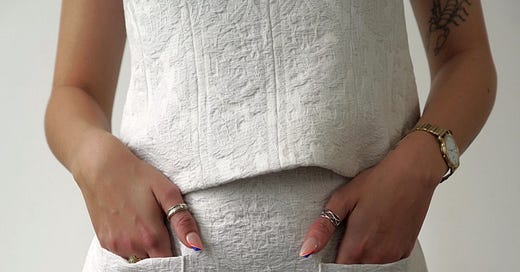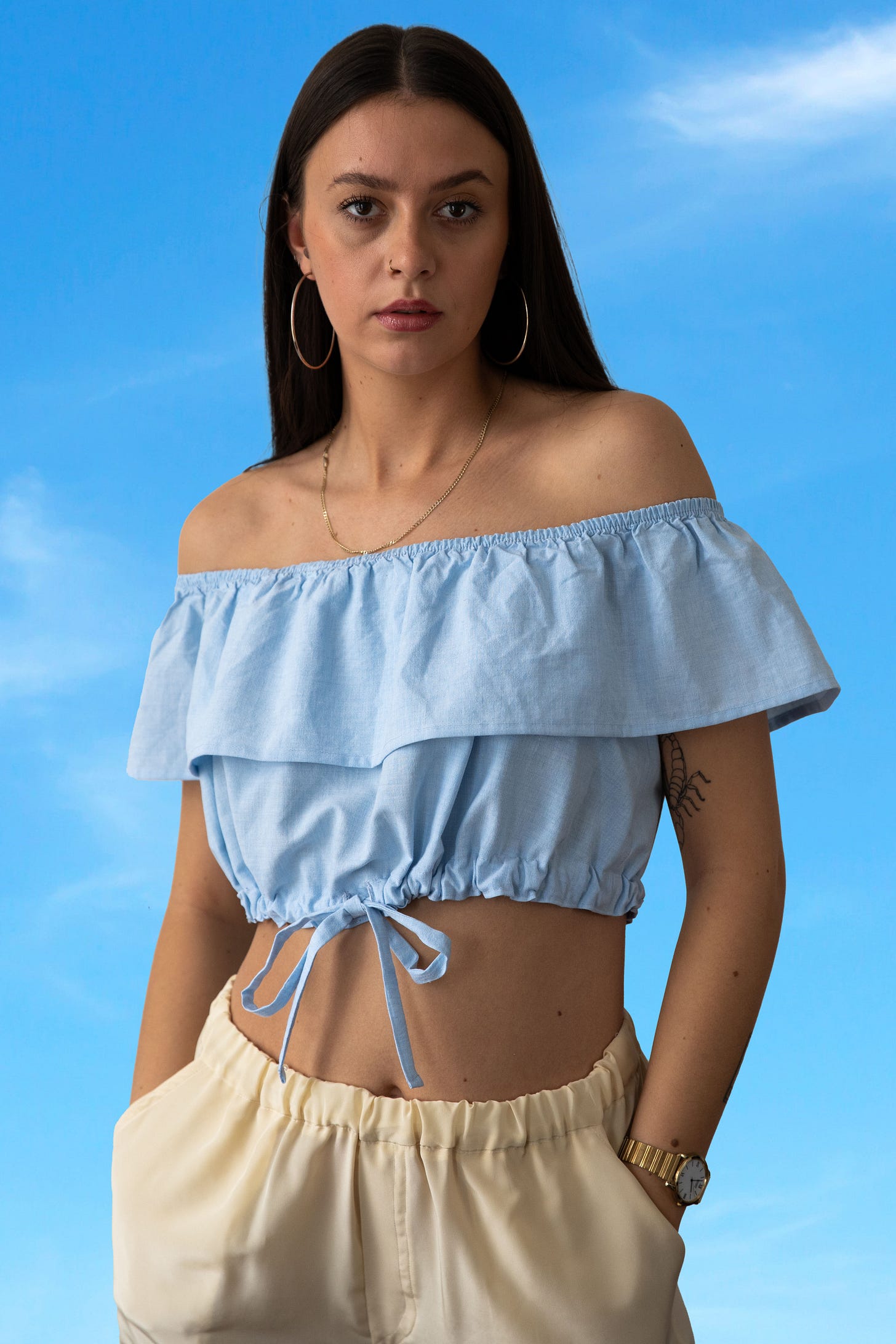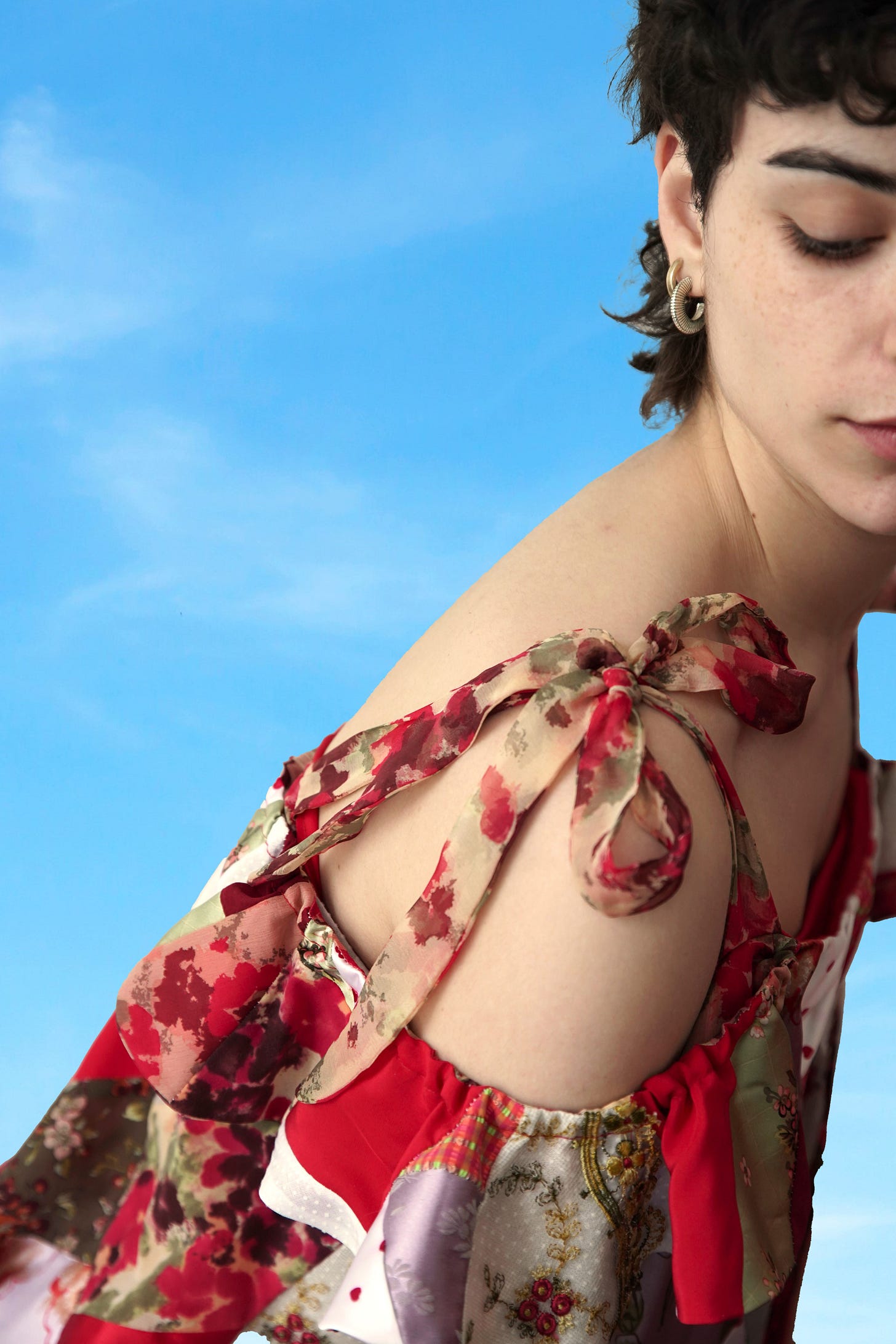Sew it Yourself
Could you make your own clothes? If replacing a button is the height of your skill set, maybe now is the time to try...
Last year I tried almost anything I could think of to replace the thrill of shopping. I held a swapping party, I borrowed clothes, I got into repair and alteration, I rented. Of course I also shopped - just five times (plus a couple of second hand), and, readers, I did it. I not only got through the year, I learned so much about fashion along the way.
What I did not attempt - and a few of you have asked about this - is dressmaking. Or shortmaking, or shirtmaking. I have never made something I would want to wear myself, but then I have never tried. Enter Wasted Threads. I’ll let them introduce themselves below, but these girls are on a mission to get us sewing again. Could we do it? I asked them to share some tips, plus a simple pattern to get us started. Or at least inspired…
PS As to the question, ‘Is this allowed on Rule of Five?’ my answer is this: as long as the material is upcycled or deadstock (and you can find some fabulous fragments on eBay etc), none of it counts as part of your precious five. Hurrah!
From Wasted Threads..
“There’s never been a better time to get into sewing. From the thousands of Sewing TikTok-ers to Balenciaga adding upcycled pieces to their SS24 collection, making and mending is back in a big way.
‘Dressmaking’ (or the art of making dresses) encapsulates most forms of making clothing. Some consider the term ‘dressmaker’ gender specific, so the term Sewist is also popular, the valued skills involved nudging it towards ‘scientist’ or even ‘artist’.
We’re Susan and Rose from Wasted Threads and we’ve spent our careers in the fashion industry as designers for well-known high-street and luxury brands. We love the artistry of clothes and design, fashion, the planet and the people on it. We see sew-your-own fashion as a way of wearing cool, beautiful, unique fashion pieces, within the Rule of 5.
We design fashion to sew and upcycle at home instead of being made in a factory. We create PDF patterns for fashion pieces that suggest how you can upcycle, say, an old shirt, a scarf, jeans, or other textiles, saving them from landfill and preventing waste. We love highlighting catwalk trends, and providing detailed making instructions, professional tips, and techniques.
Becoming a sewist is not as hard as it seems, we promise. By the end of this we’ll have you raring to chop up your old clothes to make exciting new, beautiful garments that you can be proud of - whether you’re a complete beginner or a seasoned sewist.
Once upon a time, everyone knew someone who made their own clothes. How did sewing a button back on a blouse become so intimidating? Because it’s become easier and cheaper to pick up brand-new clothes than a needle and thread. But with a little practice you can make runway-inspired designs at home, or even create your own thing in your own size and style. You don’t need to be a member of the press or retail buyer to see a Paris runway show anymore - it’s live streamed - and with a little inspiration, effort, and imagination, the sewist in you might say ‘hey, I could make that’.
Sewing is a mindful affair, and a full brain workout. It’s the process of creation. You get a huge sense of achievement turning nothing into something, or even something old into something new. We think it’s better to use upcycled materials, that way you help limit fashion waste. It’s often said that dressmakers have two hobbies: sewing & collecting fabrics. If you’re a newbie, copy the seasoned sewists and start the obligatory fabric stash to keep all your prized textile finds, off-cuts, and upcycle ideas ready for the next project.
Along with Balenciaga, there are other designers waving the flag, (a recycled one of course); we like Conner Ives and Chopova Lowena for inspiration.

But, if you’re thinking, “you lost me at sewing a button back on,” know that it’s truly amazing what can be achieved with very little skill and just a needle and thread, with a bit of help and guidance, (which we’re about to provide). The sewing machine can come later. Enthusiasm and patience are the main requirements needed to get started - you can really start sewing anywhere.
Before you start sewing
A first step for every level is to do a wardrobe trawl. Look for clothes you don’t wear, don’t fit, or that are worn or broken. The goal is to get excited about all the creative potential. That dress: love the colour, hate the fit? Could it be a pair of cargo trousers? Could those denims become a Victoria Beckham inspired skirt? Can you turn those old shirts into a cute top?
A tip for your trawl: sort your items into fabric groups, by fabric types. Keeping similar weight and fibre types together will mean that the fabrics can be used together, as they have comparable characteristics. Think flowing silks compared to heavy-weight denim. If used in the same garment the properties of the fabrics can fight each other, and the outcome could be messy. Keeping same-weight fabrics together also makes it easier to recycle fibres down the line. If you want to get super creative, you’ll also want to sort your items into matching and contrasting colours that you feel look exciting, ready for future designs.


In terms of equipment you only really need a needle and thread, scissors, a tape measure, tailor’s chalk, (a pencil will do) and a piece of fabric. If you don’t want to risk cutting into clothes yet, start with an old tablecloth or sheet. Avoid stretchy fabrics to begin with and instead choose woven (bed sheet-like) fabrics which are more stable and easier to sew. If you’re unsure, do the pull test. Hold the fabric in two hands between your thumbs and index fingers and pull it taut. Stretchy fabrics will pull out like a knitted sweater, whereas rigid woven fabrics tend to not move.
How do you sew your first stitch?
Trace a few straight ruler lines with tailor’s chalk (or pencil) onto the fabric. You’ll want to start with the most basic (and important) hand stitches - the running stitch and the backstitch. Thread your needle, knot the thread ends and start to stitch along one of the lines.
Follow this video for a demo:
Your aim is to achieve small, neat continuous stitches. Then, once you feel good about that, move on to backstitch which you can master easily and use for most seam finishes. Hand stitching is the ultimate sewist’s skill, and why Paris couturiers and Savile Row tailors are held in high esteem for the finesse of their work. Not to be underestimated.
If you have a sewing machine, use a similar exercise. First time out: small, neat, continuous stitches. Remember, you’re the one in control with your foot on the pedal. (NB: you’re not driving a Ferrari). Try out twists and turns and get to know your machine. Oh, and very important: keep your hands away from the needle.
Make something that you want to wear as soon as possible.
This is the best way to learn: you’ll gain confidence, so start small with an accessory or a small item. If you make a mistake, you can always unpick and re-stitch, (a Stitch Ripper is a great investment).

It’s important to be realistic for the first few goes at dressmaking, but you’ll be surprised at what even a beginner can make. There are loads of YouTube videos and PDF patterns out there for beginners to help you along. Our Running Shorts pattern is a great place to start if you’re a beginner (subscribers can access the pattern for free below). We encourage using the pattern over and over again, since each pattern can be made in several versions, and different fabrics totally change the look and how you wear the garment. For example, we made our Sienna skirt from damask curtains, saved, unpicked (we said a Stitch-Ripper was useful), washed and upcycled - the pattern also looked cool made from checked scarves for a completely different look.
This resurgence in sewing, sparked by forward-thinking designers and the growing upcycling movement, is an open invitation for everyone to play a crucial role in shaping a more sustainable fashion future.
Don’t forget to watch our videos for beginners stitching tips and send us your upcycled projects on instagram @wastedthreadsofficial. We're buzzing with excitement to see how you bring your sewing projects to life!
For those who are paying subscribers to this campaign, there’s a gift below: a code for you to access the Running Short pattern on the Wasted Threads website for free, (rrp £10). If you are not a paying subscriber but you are enjoying this journey, look on it as your commitment to the campaign!
Keep reading with a 7-day free trial
Subscribe to Rule of Five to keep reading this post and get 7 days of free access to the full post archives.






